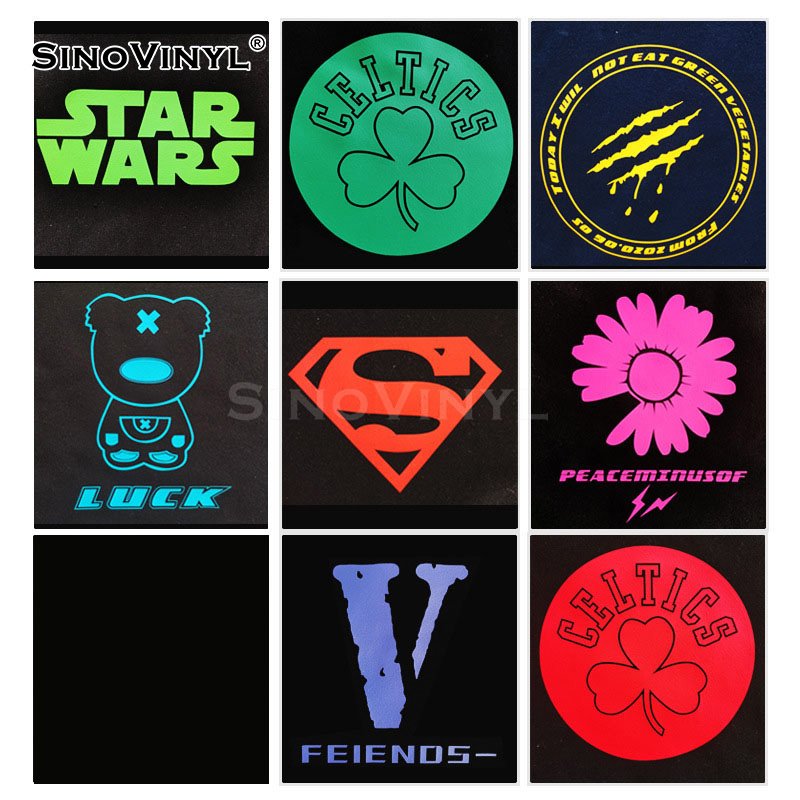Types of Heat Transfer Vinyl
Here is a brief overview of different types of Heat Transfer Vinyl (HTV), including PU vs. PVC and Specialty HTV:
1. PU (Polyurethane) Heat Transfer Vinyl
– PU vinyl is a thin, flexible material known for its soft feel on fabrics.
– It’s highly durable, making it suitable for intricate and detailed designs.
– PU vinyl is available in a wide range of colors and finishes.
2. PVC (Polyvinyl Chloride) Heat Transfer Vinyl
– PVC vinyl is thicker and has a slightly stiffer texture compared to PU.
– It’s known for its opacity, making it a good choice for dark or colored fabrics.
– PVC vinyl tends to be more budget-friendly.
3. Glitter Heat Transfer Vinyl
– Glitter HTV contains tiny, reflective particles that add a sparkling effect to designs.
– It’s popular for creating eye-catching and festive apparel.
4. Foil Heat Transfer Vinyl
– Foil HTV has a metallic, mirror-like finish that gives designs a striking appearance.
– It’s often used to add a touch of elegance or futuristic flair to garments.
5. Glow-in-the-Dark Heat Transfer Vinyl
– This type of HTV is designed to emit a soft, luminous glow in low light or darkness.
– It’s ideal for creating unique and attention-grabbing designs.
6. Matte Heat Transfer Vinyl
– Matte HTV has a non-reflective finish, providing a more subtle and muted look.
– It’s great for achieving a modern and understated aesthetic.




7. Metallic Heat Transfer Vinyl
– Metallic HTV offers a polished, metallic sheen that adds a touch of luxury to designs.
– It’s often used for creating logos, monograms, and other standout elements.
8. Stretch Heat Transfer Vinyl
– Designed for use on stretchy fabrics like athletic wear and spandex, this type of HTV provides excellent elasticity and durability.
9. Reflective Heat Transfer Vinyl
– Reflective HTV contains glass beads that reflect light, making designs highly visible in low-light conditions.
– It’s commonly used for safety and visibility purposes on activewear and workwear.
10. Patterned Heat Transfer Vinyl
– Patterned HTV comes in a variety of pre-printed designs, such as animal prints, camo, and more.
– It’s a convenient option for creating intricate patterns without the need for multiple layers.
11. Sublimation Heat Transfer Vinyl
– While not a traditional vinyl, sublimation involves printing designs onto a special transfer paper that is then heat-pressed onto fabrics.
– It provides vibrant, long-lasting, and high-quality results.
Final Words
Remember to consider factors like fabric type, design complexity, and intended use when choosing the right type of HTV for your project.














